The Changing Face of Soup and Bread by Alison Colwell
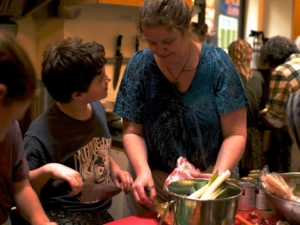 Soup and Bread (formerly known as Meals for Seniors) is one of the most loved and successful projects the Food Program runs. I’d love to say we planned it that way—but of course we did not.
Soup and Bread (formerly known as Meals for Seniors) is one of the most loved and successful projects the Food Program runs. I’d love to say we planned it that way—but of course we did not.
We started making soups for seniors in May of 2011, and in that first kitchen we put 95 soups in the freezer. The project began as a response to the need for good, low cost, nutritious meals for seniors on our island. We worked with the Tuesday Walking Group to distribute those soups to seniors who wanted them, and I used to knock on doors at Page Drive. Local farmers help supply produce when they can (they still do). We had 6 kitchens that first year.
In the Spring of 2012 we started opening up the hall for lunch. We thought that as we all took a break from the kitchen and sat down to eat together, the community might want to come and join us. Now, three years later, we are open for soup twice a month, and sometimes more than fifty people come eat with us. Those people that can pay $5 for lunch do so and support the program, but no one is ever turned away hungry.
In 2012, in response to grumbles from seniors who were getting tired of just soup, we started making frozen meals. That year we had 8 kitchens and made 70 meals.
Fast forward two years. In 2014 we had 22 kitchens and made more than 1200 meals! Compare that to 6 the first year. At least 95% of those meals go to seniors (55+). Did you know that our frozen soups and meals are available for $5 at the Tuesday Walking Group at the Lions, the Health Care Centre and the South Hall? Soups are distributed through the Food Bank and the school. Over the last four years the project has been continually changing, and growing and feeding people in this community.
We have a super group of community volunteers who make all those meals and soups, and we couldn’t do this without their amazing dedication. As the program grows, they need help! It doesn’t matter if you can’t stay the whole time—a new person peeling potatoes or washing dishes is always appreciated! There are lots of different jobs, and no experience is necessary— just the ability to follow directions and have fun. Everyone is welcome.
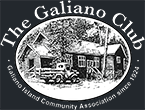
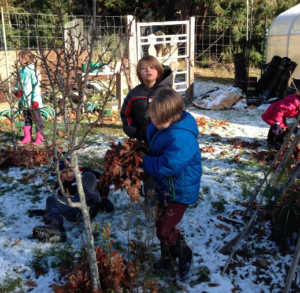 December was ushered in with the Great Bigleaf Rake-Up at the school garden. With maple leaves buried under a dusting of crunchy snow, blue sky above, Galiano School kids gathered around two large maple trees on the school property to learn about densely rich maple leaves and the value they bring to other plants when composted. The kids were divided into four teams: Calcium, Magnesium, Potassium, and Nitrogen, and each team learned some interesting facts about these four elements that figure prominently in maple leaves. What also became quickly apparent was how humans and plants require the same nutrients in order to thrive! For example, blossom End Rot in tomatoes and osteoporosis in humans are both related to calcium deficiency. In another example, magnesium is required by plants to process and use amino acids, vitamins, and proteins, and similarly for humans, magnesium is used to process other elements, notably calcium and potassium. Whereas magnesium deficiency will result in yellow, veiny leaves in plants, a deficiency in humans will impact the functioning of muscles and organs.
December was ushered in with the Great Bigleaf Rake-Up at the school garden. With maple leaves buried under a dusting of crunchy snow, blue sky above, Galiano School kids gathered around two large maple trees on the school property to learn about densely rich maple leaves and the value they bring to other plants when composted. The kids were divided into four teams: Calcium, Magnesium, Potassium, and Nitrogen, and each team learned some interesting facts about these four elements that figure prominently in maple leaves. What also became quickly apparent was how humans and plants require the same nutrients in order to thrive! For example, blossom End Rot in tomatoes and osteoporosis in humans are both related to calcium deficiency. In another example, magnesium is required by plants to process and use amino acids, vitamins, and proteins, and similarly for humans, magnesium is used to process other elements, notably calcium and potassium. Whereas magnesium deficiency will result in yellow, veiny leaves in plants, a deficiency in humans will impact the functioning of muscles and organs.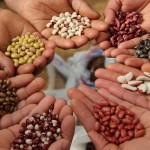 How can I make my food supply more local? Why can’t I find seeds for those varieties my grandmother grew in her garden? How do I save seeds from plants that cross-pollinate? What do we need to do to start a seed bank on Galiano?
How can I make my food supply more local? Why can’t I find seeds for those varieties my grandmother grew in her garden? How do I save seeds from plants that cross-pollinate? What do we need to do to start a seed bank on Galiano? The Garlic Co-op is a group of garlic enthusiasts who collectively grow a few varieties of organic premium garlic, with scapes, in a large, shared, sunny plot at the end of Morgan Road, at the south end of the island. Together we learn about this easy-to-grow, hardy crop, share the load of bed-preparation, seeding, weeding, mulching and harvesting, and enjoy some delicious garlic. We also explore various soil-building and composting techniques. Everyone is welcome, and no previous experience is required to join. If you’re interested, come on out to a work party. Email galianofoodprograms@gmail.com for more info.
The Garlic Co-op is a group of garlic enthusiasts who collectively grow a few varieties of organic premium garlic, with scapes, in a large, shared, sunny plot at the end of Morgan Road, at the south end of the island. Together we learn about this easy-to-grow, hardy crop, share the load of bed-preparation, seeding, weeding, mulching and harvesting, and enjoy some delicious garlic. We also explore various soil-building and composting techniques. Everyone is welcome, and no previous experience is required to join. If you’re interested, come on out to a work party. Email galianofoodprograms@gmail.com for more info.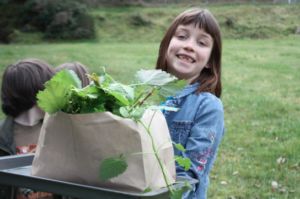 I knew nettles were good for us, but really, how good? To find out, I was inspired to get a lab sample of one of Galiano’s most prominent forageable foods. I then compared the analysis against the nutrient values of kale, broccoli, lettuce, spinach and 2% milk (you’ll see why) and the results blew me away. The data on the foods below came from the USDA Nutrient Database and the Canadian Nutrient File.
I knew nettles were good for us, but really, how good? To find out, I was inspired to get a lab sample of one of Galiano’s most prominent forageable foods. I then compared the analysis against the nutrient values of kale, broccoli, lettuce, spinach and 2% milk (you’ll see why) and the results blew me away. The data on the foods below came from the USDA Nutrient Database and the Canadian Nutrient File. I have the Blue penicillin mold strain for blue-veined cheese.
I have the Blue penicillin mold strain for blue-veined cheese.